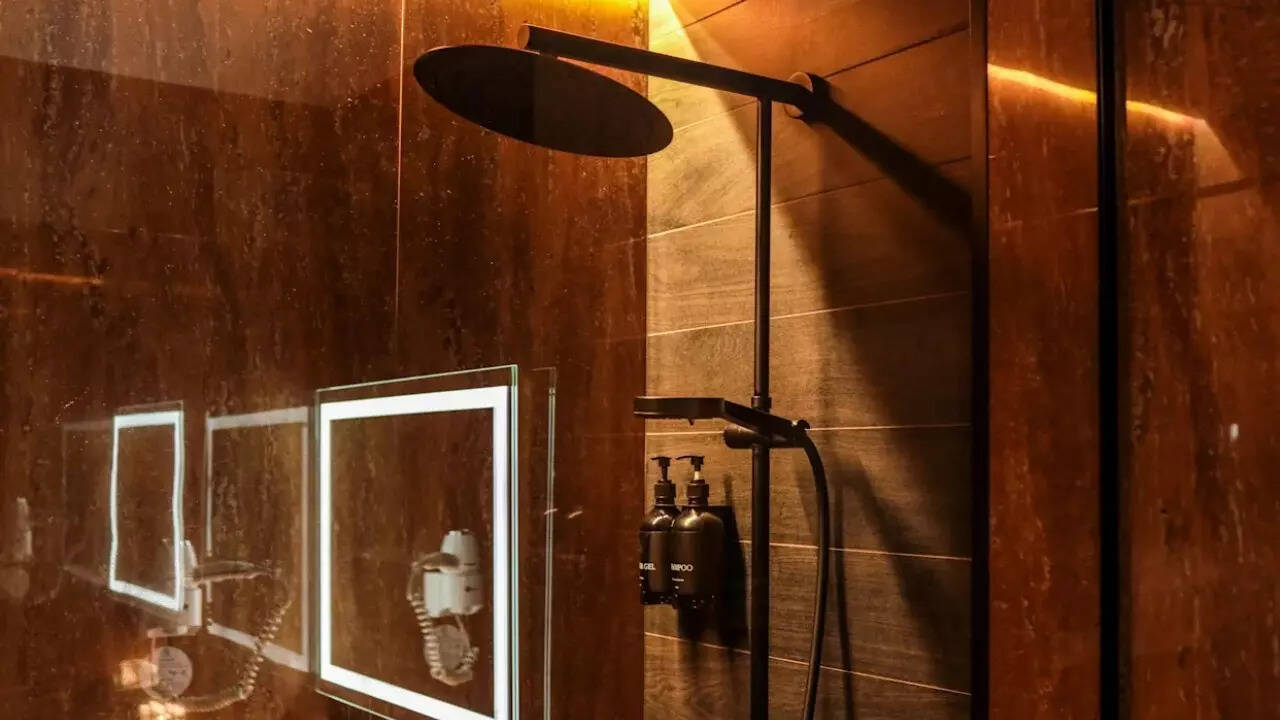 For a change, you can let darkness prevail!In our always-on digital lives full of shiny and bright lights, finding truly restful rituals can feel like a quest. Hence, sometimes it’s important to keep the lights out!Enter the unique wellness concept of “dark showering” — the idea of taking a shower in dim or no lighting, typically before bed, to help the body and mind wind down.
For a change, you can let darkness prevail!In our always-on digital lives full of shiny and bright lights, finding truly restful rituals can feel like a quest. Hence, sometimes it’s important to keep the lights out!Enter the unique wellness concept of “dark showering” — the idea of taking a shower in dim or no lighting, typically before bed, to help the body and mind wind down.
Here’s what stress does to your health
At first glance, it may seem like just a mood-setting change, but wellness experts suggest there’s more to it: by reducing visual stimulation and supporting your body’s natural rhythm, this “zero-screen, low-light” rinse could help reduce stress, improve sleep quality, and promote calmer mental health.Intrigued much? Let’s unpack!
What is Dark Showering?
Dark showering is a simple concept with subtle power: instead of hopping into a brightly-lit bathroom at night, you turn off or dim the lights, perhaps add low-glow candles or red or amber light, and take your regular shower in this reduced sensory environment. The idea is to convert the act of showering from a purely hygienic routine into a mindful transition from wakefulness to rest. Simply put, it’s the practice of showering in dim light or near darkness, especially in the evening, to help your body and mind wind down. According to wellness experts, the absence or reduction of bright light signals your brain that it’s evening-time, allowing your nervous system to shift into “rest mode.”However, importantly, dark showering isn’t about taking a cold plunge or a fancy mechanical gadget — it’s about ambience, awareness, and environment.
According to wellness experts, the absence or reduction of bright light signals your brain that it’s evening-time, allowing your nervous system to shift into “rest mode.”However, importantly, dark showering isn’t about taking a cold plunge or a fancy mechanical gadget — it’s about ambience, awareness, and environment.
Why it may help: Sleep, stress, and mental well-being
Reducing light and sensory load: The incessant barge-in of bright lights, screens, and visual stimuli in the evening sends signals of alertness to the brain and suppresses the release of melatonin (the hormone that helps with sleep). Whereas, turning lights down or off during a shower creates a “low-stimulus environment” — less visual input, fewer distractions — which can help shift the nervous system into its parasympathetic (“rest and digest”) mode.Mindfulness, ritual, and body awareness: In darkness or dim light, the senses of touch, sound, and scent become more vivid: the feel of water on skin, the sound of the shower, the scent of soap or oils. This sensory focus is related to mindfulness and helps many feel calmer and more grounded. The ritual of “stepping into darkness + water” becomes a cue to the brain: “now it’s time to unwind.” Better sleep quality: Research suggests that when a shower is taken in dim light near bedtime, the combination of warm water plus low light may help the body wind down, raise and then drop core temperature (which supports sleep onset), and promote melatonin release. Michael J. Breus, PhD, globally known as The Sleep Doctor, told Real Simple, “Warm showers taken about 90 minutes before bed are well-documented to help create the artificial rise of core body temperature and then a precipitous fall of core body temperature to help melatonin production.”Mental health and stress relief: By constructing a quiet, low-stimulus ritual, dark showering offers a small but potentially meaningful way to manage stress, slow racing thoughts, and create a buffer between a busy day and a restful night.
Better sleep quality: Research suggests that when a shower is taken in dim light near bedtime, the combination of warm water plus low light may help the body wind down, raise and then drop core temperature (which supports sleep onset), and promote melatonin release. Michael J. Breus, PhD, globally known as The Sleep Doctor, told Real Simple, “Warm showers taken about 90 minutes before bed are well-documented to help create the artificial rise of core body temperature and then a precipitous fall of core body temperature to help melatonin production.”Mental health and stress relief: By constructing a quiet, low-stimulus ritual, dark showering offers a small but potentially meaningful way to manage stress, slow racing thoughts, and create a buffer between a busy day and a restful night.
How to try ‘Dark Showering’: Safe practice tips
Although it might yield some benefits, it’s important to note that dark showering is not a substitute for comprehensive sleep hygiene or mental health care — it doesn’t replace good habits like a cool dark bedroom, limiting electronic screen use before bed, managing caffeine and alcohol, or treating underlying sleep disorders.In case you’d like to try dark showering, here are simple guidelines:Select timing: Use the ritual in the hour before you aim to sleep.Light level: Aim for dim ambient light, a low-wattage lamp, or a candle rather than full darkness (especially if you may feel unsafe in full darkness). Warm but safe water: Warm showers help the body transition; make sure safety (grip, temperature) isn’t compromised.Minimise distractions: Leave the phone or screens outside or in standby; avoid bright artificial light.Focus on sensations: Notice water on skin, sound of water, breath. Optionally use soothing scents (lavender, chamomile) for added calm.Consistency: Use the ritual regularly (several nights per week) to reinforce the body’s “wind-down” signal.Listen to your body: If the darkness makes you slightly jittery or anxious, or you have some safety concerns (slips, faintness, etc.), modify your surroundings accordingly (soft light, candle, night-light).However, it’s wiser to remember that not everyone finds darkness soothing.
Warm but safe water: Warm showers help the body transition; make sure safety (grip, temperature) isn’t compromised.Minimise distractions: Leave the phone or screens outside or in standby; avoid bright artificial light.Focus on sensations: Notice water on skin, sound of water, breath. Optionally use soothing scents (lavender, chamomile) for added calm.Consistency: Use the ritual regularly (several nights per week) to reinforce the body’s “wind-down” signal.Listen to your body: If the darkness makes you slightly jittery or anxious, or you have some safety concerns (slips, faintness, etc.), modify your surroundings accordingly (soft light, candle, night-light).However, it’s wiser to remember that not everyone finds darkness soothing.
